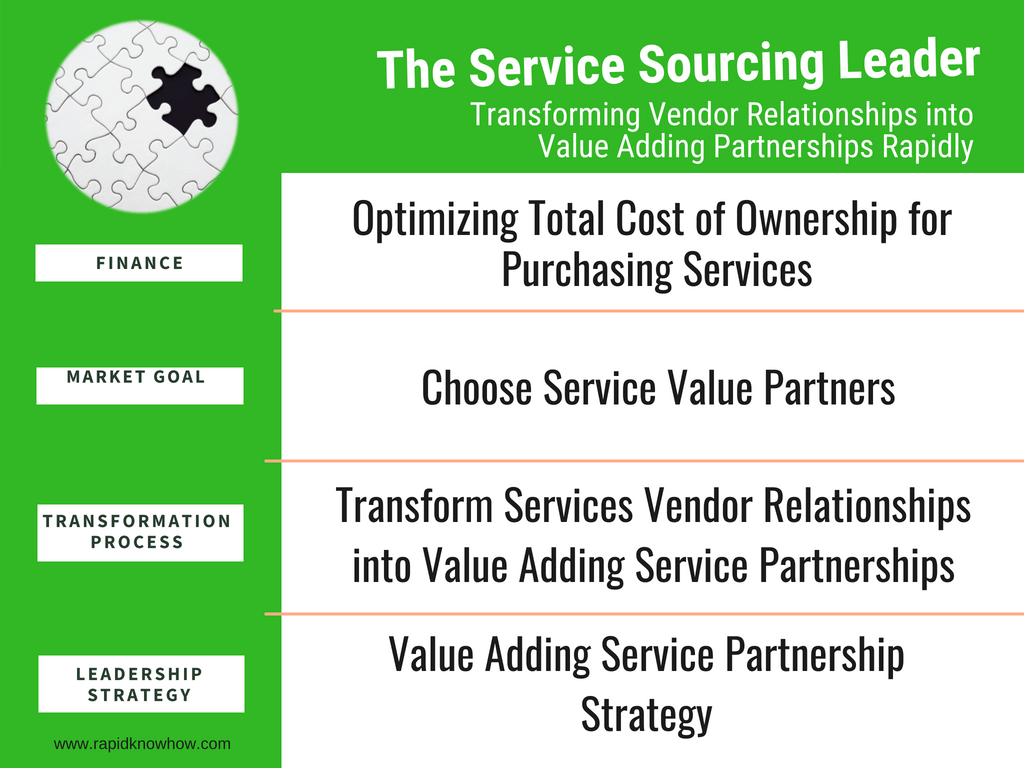How to Lead Vendor Negotiations Successfully
Negotiating a Contract is often a significant challenge in the area of Procurement, because of different stakeholders in the process and the short time span of two weeks. This short post will help you to lead your vendor negotiations successfully.
As a Service & IT Procurement Specialist, I have often been confronted with these challenges all-in-one, meaning having to manage these challenges at the same time during the contract management process.
Today, we’ll focus on how to prepare and lead the contract negotiation process with your vendors successfully. Let’s get started:
You should have already prepared the following:
1. You defined the scope of the contract with your internal buyers, and you have also included the timeframe of the deal.
2. A contract template has been prepared with your Legal department, concerning Amendments, SLA Terms and a Layout of a Frame Contract, which we’ll cover in the tutorial on how to Implement a professional PCM Process in a Corporation.
3. You and your team prepared the schedule to discuss and negotiate the terms with the vendors and have ready all technical know-how which is required to lead the negotiation professionally.
For the contract negotiation, you’ll prepare :
1. Learn about the position of the Vendor Besides having the necessary technical know-how, also learn the financial situation of the company and how much business you do with this Vendor in your Corporation.
The goal is to know how dependent the vendor is with your Corporation.
For example, I had a negotiation a couple of years ago, and the CEO of the company said that it was the worst year regarding revenue in that year we negotiated the contract and I pulled out a newspaper article that showed that the vendor has the highest planned income in the upcoming year.
So on one side, this was a quite offensive negotiation tactic from both sides. We will cover this on tactics in negotiation later in this blog.
Therefore, you should not accept a rise in prices from a vendor just for the sake of it. It is not an approach which is neither professional nor beneficial for both parties.
On the other hand, if the prices from the vendor raw material producers are being raised and transferred over to the vendor, this is a more understandable reason why to raise prices.
2.Set the aims and tactics Together with your Internal Buyers, make sure that you clear the roles up front. Often the roles are becoming apparent with the Internal Buyers during the negotiation with the Vendors. Avoid this situation, because it signals that you have not yet received the trust as a procurement department.
Therefore, gain the confidence of your Internal Buyers and work together out how you will achieve your goals together in the negotiation.
These goals can be the following:
-Decrease the TCO (Total Costs of Ownership) of the IT Software for the upcoming three years by replacing in-house support with an external premium vendor support
-Decrease price per item of office material like office tables by purchasing a higher sum and thereby falling under another price scaling in the upcoming year
-Reducing the % company lease payment with the Vendor in the next five years, as monthly lease prices are not competitive and 2-3 other Vendors are providing enhanced conditions.
These three goals are examples and can set in negotiation as aims for your Internal Buyers.
Each target has another tactic; here it is essential to think not only tactical but also strategic.
3. Think long-term strategic and not just tactical, especially with long-term Vendors: This means that you should also be able to evaluate what your Vendor’s Performance is. You will probably have already done this when looking in-depth at the positioning of the Vendor.
If a Vendor has just arrived in the company, you should be able to communicate in an open and stakeholder aligned manner that you will test your cooperation by offering a contract of 6 months, as your strategy will be to set-up a dual-sourcing strategy of another vendor to compare both vendors in action , thereby receive the best-performance from both parties.
Now you and your team are ready to lead the contract negotiation and the implementation, make sure that you integrate what you have done during the preparation phase of the contract negotiation.
As the saying says, “plan the work and work the plan”.
Following this principle will give you a professional position in the contract negotiation process, and you will have the process under control.
You as a Procurement Professional will become the leader in the process, and thereby you’ll enhance the credibility within your organisation.
To your success. Looking forward to hearing from you!
With best regards,
Philip
 Philip David MBA specializes in crafting your breakthrough service sourcing strategy, evaluating and choosing your strategic service providers, developing your business case for optimizing your total service cost of ownership and leading your implementation project for delivering sustainable results rapidly.
Philip David MBA specializes in crafting your breakthrough service sourcing strategy, evaluating and choosing your strategic service providers, developing your business case for optimizing your total service cost of ownership and leading your implementation project for delivering sustainable results rapidly.
Contact Philip
Please, use the form below and I will come back within 24 hours. Email: philip.josef.david@gmail.com
[CONTACT_FORM_TO_EMAIL id=”4″]




